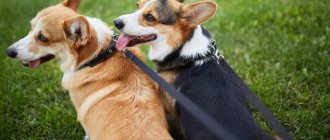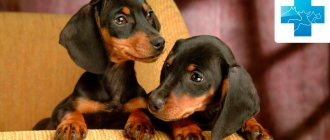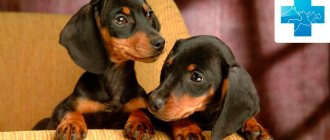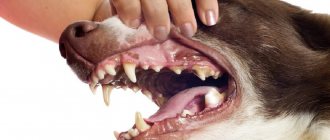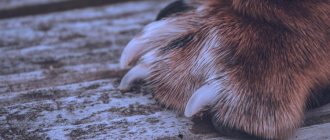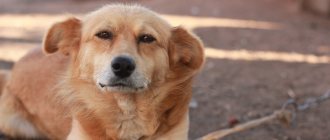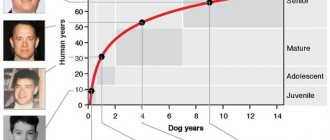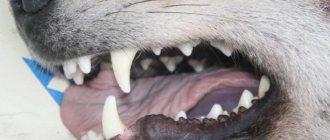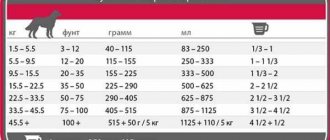Mastitis in dogs is an inflammation of the mammary gland, which often occurs after childbirth, but also occurs in nulliparous bitches, as well as in male dogs. The pathology is dangerous because it can cause blood poisoning, gangrene, benign tumor, and other problems. Therefore, if you find a lump on your animal’s chest, immediately call a doctor who will prescribe treatment for mastitis in your dog.
Causes of mastitis in dogs
The main cause of inflammation is stagnation of milk, which arose due to poor emptying of the gland during feeding (lactostasis). The problem occurs not only in females who have given birth to 2-3 puppies. It appears if the cubs are taken from the breast early or the entire litter has died. Stagnation is possible in mothers with many children who are feeding 12 babies if the babies ignored one of the nipples and the owner did not put them near the problem gland.
The alveoli that produce milk, with poor suction, expand and compress the ducts, which is why the liquid stops flowing normally. This leads to enlargement and hardening of the gland area. Stagnation is an ideal environment for bacteria. Over time, they enter the milk and begin to actively develop, causing inflammation.
The situation worsens if bacteria that cause decay (Staphylococcus aureus) penetrate into the mammary glands through injuries and microcracks. The disease progresses quickly, is acute, requires antibiotics and expensive treatment.
The fibrocystic form occurs after 6 years of age due to hormonal imbalances, and also if the bitch constantly gave birth and raised puppies. This variety can also be found in males. Fibrocystic mastitis rarely develops into a malignant tumor.
Main causes of the disease
The main cause of the disease is a bacterial infection that develops independently or against the background of other diseases. The likelihood of infection increases with weakened immunity caused by:
- chronic pathologies;
- hypothermia or overheating (especially dangerous for hairless breeds);
- persistent helminthiasis;
- poor nutrition;
- postoperative complications.
Inflammation can also occur due to hormonal imbalances (false pregnancy) and diseases of the reproductive organs (endometritis, pyometra). The risk group includes uncastrated animals and pets that produce offspring too often.
Often the growth of bacteria provokes lactostasis, that is, stagnation of milk. This disorder occurs when natural pumping is impossible, typical for the following situations:
- too early weaning from the mother;
- small litter;
- mass death of puppies;
- persistent ignoring of individual nipples during feeding.
The risk of infection also increases with teething. Without calculating the force, babies can injure the sensitive skin of their mother's nipples. Their sharp claws may also be to blame.
Symptoms of mastitis in dogs in a female who has given birth
The sooner the owner notices the symptoms of mastitis, the higher the chances of quickly getting rid of the problem. The advanced form is difficult and expensive to treat.
What does mastitis look like in a dog at a mild stage?
When milk stagnates, a lump appears in the mammary gland. Consult your veterinarian. If the initial phase, the milk has not yet spoiled, there are no foreign impurities, it will be enough to add puppies, which will suck out the excess liquid.
Mastitis in a dog: signs of complications
If the problem is ignored, swelling appears, the lump turns red, and begins to hurt. But the presence of fever depends on the form and stage of the disease. If the pathology is not treated, the inflammation will increase. Symptoms:
- The body temperature is high, the gland is hot to the touch.
- The nipple is enlarged.
- Feeding is painful, the bitch does not allow the puppies to approach the nipples.
- Traces of pus are visible in the milk, sometimes with blood. In this case, the offspring is transferred to artificial feeding. Contaminated milk can poison the babies.
- The tumor grows, the skin turns red, becomes inflamed, and pain appears when trying to touch the tumor.
- The lymph nodes near the diseased area enlarge - round, dense lumps appear under the armpits and in the groin area.
If nothing is done, the lump softens and pus enters the bloodstream, causing infection (abscess). In parallel, gangrene develops - tissue necrosis, which must be removed surgically. Failure to treat will result in the dog's death.
Normal location and quantity
How long can dogs actually live?
Dogs are prolific animals. Therefore, nature gave them several mammary glands, allowing them to feed all the puppies that were born. The normal number of nipples in a female dog is considered to be five pairs, which are located evenly on the skin along the chest and abdominal walls.
Each pair of nipples has its own name according to its location: the upper two pairs are called pectoral, followed by two abdominal pairs and one pair of inguinal nipples.
- The two pairs of pectorals are not difficult to feel behind the front paws.
- Abdominal couples may have different gaps between the nipples and this is a variant of the norm.
- The inguinal pair can be felt closer to the hollows of the hind legs; there are often cases of their localization directly in the hollows.
The number of nipples directly depends on the mammary glands; each of them has a parallel pair. An important role in how many nipples a dog should have is played by its size. It is known that on average large breeds have 8-12 tits per 4-6 mammary glands. And small breed dogs usually have no more than eight of them, and accordingly only 4 mammary glands.
Standard placement of nipples in a bitch
The blood supply to different pairs of nipples comes from different vessels. The thoracic pairs receive blood from the small branches of the medial artery and from the anterior part of the thoracic artery. The femoral arteries supply the abdominal and inguinal pair of tits.
Symptoms of mastitis in dogs with false pregnancy
If the bitch has not been bred, she may start producing milk 2 months after her heat. A couple of drops is no reason to worry. If it flows profusely, monitor the dog’s condition and palpate the chest regularly. The pet may be depressed, fever and other symptoms of inflammation will appear.
If a lump appears on the mammary gland, consult a doctor immediately. Since the main reason is a malfunction of the endocrine system, the veterinarian will prescribe hormonal, anti-inflammatory drugs.
What should you do if your dog’s mastitis recurs every time it’s falsely pregnant, and you’re not going to breed it? Spay your pet. This will not only save you from problems with inflammation of the mammary gland, but will also prevent cancer of the genital organs, pyometra (purulent inflammation of the uterus).
Genetic predisposition
How long should you really walk your dog?
A variant of the norm is considered not only to be a different number of nipples in different breeds of dogs, but also:
- asymmetrical arrangement of pairs and vertical rows - the so-called “beds”;
- absence of one of the pairs - thoracic, abdominal or inguinal;
- the presence of some nipples in the middle of the abdomen;
- their difference in size and shape;
- increased pigmentation of certain areas of the breast.
When a large number of offspring are born, the mammary glands must successfully cope with their function
These factors are not believed to be related to dog breed, but may be related to genetic predisposition. The main difference between different breeds is that in smooth-haired animals these changes are more visible than in dogs with long, thick hair. In the latter, usually any changes in the structure of the mammary glands are generally hardly noticeable.
Important information! Culling dogs for these factors is not allowed. Usually at dog shows they do not count the number of nipples or study their location.
Before the appearance of offspring in a bitch, it is impossible to determine how fully or not the mammary glands will perform their function. Even during the embryonic period, milk ducts may not develop, then lactation through them will not occur during the feeding period of the puppies. If milk ducts are not initially formed, they will not develop throughout life, no matter how many tits dogs have. The number of nipples also does not change with age, but is not reduced either.
Many novice dog breeders pay too much attention to how many papillae a dog has. However, this factor does not play a decisive role in the successful feeding of offspring. The most important thing is how successfully the bitch’s mammary glands perform their function. It is not uncommon that 12 nipples do not provide a good flow of milk due to underdevelopment of the milk ducts. At the same time, sometimes a nursing bitch can feed a large litter of puppies with just one pair of full-sized nipples.
Symptoms of fibrocystic form
The fibrocystic form is often a complication of normal mastitis that occurs in dogs after birth. But this form of mastitis can also occur in a nulliparous dog after a false pregnancy and other conditions that provoke a hormonal imbalance.
Symptoms vary:
- The tumor may be hot to the touch and granular. The formations are round in shape, mobile, and do not cause pain.
- Ichor is released from the nipple.
- The pet is clearly experiencing discomfort in the mammary glands and is trying to lick it.
- The animal refuses to eat, gets tired quickly, and behaves apathetically.
- The temperature rises, and hair falls out on the affected area.
A benign tumor can develop into oncology, so be sure to consult a doctor and get treatment.
Treatment and removal of a dangerous tumor
Having confirmed the diagnosis, the doctor develops a treatment regimen. The form of cancer, stage, condition of the lymph nodes, as well as the individual characteristics of the body are taken into account. The predominant method of treatment remains surgical removal of the tumor with complete excision of the mammary ridge and adjacent lymph nodes.
Surgery works more effectively for nodular cancer.
After the operation, the pet will undergo a course of chemotherapy to consolidate the results and prevent relapses.
Chemotherapy is also prescribed in inoperable cases. For example, with a diffuse form, which does not allow complete removal of the affected areas.
I strongly do not recommend self-medication! You risk making a mistake in diagnosis.
In addition, antitumor drugs that are available in veterinary pharmacies, if used incorrectly instead of treatment, can have the opposite effect and provoke accelerated tumor growth and exacerbation of the disease.
How to treat mastitis in a dog
Take your dog to the vet as soon as you notice a lump on the gland. After examining your pet, the doctor will tell you how to cure mastitis in a dog.
If this is not possible, the symptoms are mild (no temperature, the formation is not hot to the touch), to treat mastitis in a dog at home, you need to do the following:
- If your pet has long hair, trim it around the nipple.
- Apply puppies to the nipple where mastitis has formed in a nursing dog. Before doing this, check the quality of the milk. It should not be mixed with blood or pus. If it has inflammatory discharge (greenish color), there are white threads, transfer the offspring to artificial nutrition, call a doctor.
- Massage compacted areas after thoroughly washing your hands. When the gland softens, slowly express the milk using gentle movements. Don't try to squeeze out all the liquid. It is enough for the swelling to become softer and subside a little.
If the gland is hot, apply a cooling compress. Do not put ice directly on the skin - the animal may get burned. It’s better to make a lotion from medicinal herbs - pour 1 tbsp. sage or chamomile 1 tbsp. boiling water, leave for an hour. When the infusion has cooled, soak a gauze pad in it and apply it to the inflamed mammary gland.
Breast pump for dog
To avoid manually expressing the nutritional fluid, you can make a breast pump for your dog:
- Take a large syringe.
- Cut off the tip where the needle fits onto the syringe, making a wide hole.
- Carefully heat the cut edges so that the edge becomes smooth and does not injure the skin.
The device is pressed hermetically to the pet's nipple and milk is pumped out, after performing a massage. During the procedure, the dog can stand or lie down. There is no need to put pressure on your pet's chest in an attempt to squeeze out milk or sharply pull out the piston. You can seriously injure the dog and give it bruises.
At first it will be difficult to express, so you need to take a little, with slightly rocking movements, simulating sucking. Then the amount of expressed milk can be increased.
Diagnostics
First of all, an examination by a veterinarian is required. Your doctor will be able to suspect mastitis or even make this diagnosis at your appointment. However, to find out the cause and select the optimal treatment regimen, tests and possibly an ultrasound will be required:
- A clinical blood test will help to understand how acute the inflammatory process is.
- Cytology and Gram stain of milk. It is important to conduct a separate examination of each breast, since inflammation can spread to them with different intensity. Quite often it happens that only a few milk bags become inflamed (for example, due to injury), and the rest of the glands are healthy, and even puppies can be allowed near them.
- Ultrasound of the mammary glands. In case of voluminous compactions, an ultrasound may be required, thus it will be possible to understand whether cavities have begun to form that need to be treated surgically.
When to see a doctor urgently
If the dog is clearly unwell, there are signs of inflammation, it is lethargic, or has lost interest in puppies - immediately consult a veterinarian. If you live in a regional center and the nearest clinic is 30 km away, take a car and take your animal. You can also ask the doctor to come home and pay for the trip.
Call your veterinarian if:
- high temperature (more than 38.5°C);
- the affected area is hot;
- in milk - small pieces of yellow or greenish color, an incomprehensible cloudy liquid;
- long white threads stand out from the nipples;
- the lymph nodes under the arms and in the groin area have enlarged;
- purulent, inflamed areas appeared on the skin, blackness similar to bruises (a symptom of gangrene).
Complications and dangers of the condition
Late diagnosis and self-treatment are fraught with the growth of abscesses and gradual tissue death. In addition to complications of the existing form, damage to other organs is possible with the following consequences:
- malignant neoplasms;
- sepsis;
- infectious-toxic shock;
- acute intestinal disorder;
- pyometra;
- loss of reproductive function;
- inflammation of the spinal cord.
Ultimately, the animal may die, so do not delay in contacting the veterinarian. The sooner treatment is started, the faster and easier the recovery will be.
Veterinary care for inflammation of the mammary glands
For mastitis in dogs, treatment depends on the stage of the disease. If the situation is not critical, the doctor will prescribe medicinal ointments for mastitis for dogs, which will help relieve inflammation. The doctor prescribes the following medications to treat mastitis in dogs:
- Mastometrin - a medicine for mastitis in dogs eliminates pain and inflammation.
- Antibiotics (Ceftriaxone, Amoxicillin) – for mastitis in a bitch, they are prescribed for treatment to destroy the bacterial infection.
- Fosprenil is an immunomodulator that increases the body's resistance to disease.
- Novocaine blockades - eliminate pain.
In extreme cases, the doctor resorts to surgery - he opens the abscess, removes dead tissue, and installs a drain to drain the pus. If gangrene has occurred, he may remove the affected gland in whole or in part.
Prevention of mastitis in dogs at home
- Make sure the babies suckle from all teats.
- Feel your dog's chest regularly. If you find mastitis in a nursing bitch, consult a doctor immediately.
- If you do not plan to breed the bitch, spay her.
- Treat all wounds with antiseptics.
- For any illnesses, consult a doctor, as they can cause inflammation of the mammary gland in nulliparous females and males.
- Feed your pet high-quality food.
- Do not keep your dog in the cold or in drafts.
- Wash your pet's bedding regularly.
- Don’t forget about vaccinations, antiparasitic and anthelmintic medications – the immune system of a healthy animal copes better with inflammation.
Why do male dogs have nipples?
Now that you know that male dogs have nipples, you're probably wondering why. After all, they serve no purpose, so why do male dogs have them in the first place?
However, the better question is not so much why, but why not?
Many male mammals, including humans, have nipples. Scientists believe that the reason for this is the result of natural genetic selection, or the lack thereof.
Male and female animals begin life almost identically in the womb and have nipples. Nipples are essentially the default model for mammals, and while they serve no function in men, they also pose very few problems.
In other words, there was no reason for natural selection to get rid of nipples. A male without nipples had no inherent advantage over a male with nipples, and since they were more or less harmless, they were not taken away. This is similar to the remains of pelvic bones found in whales. The whales no longer have legs, but since the remaining structures did not cause any problems, the whales retained them, although they are not currently used.
